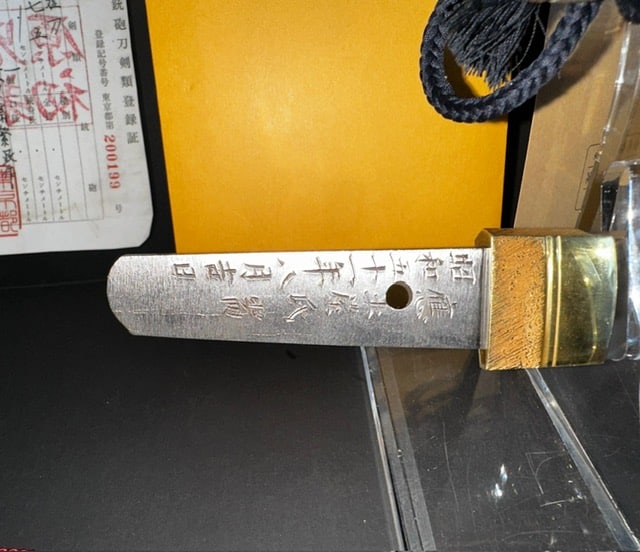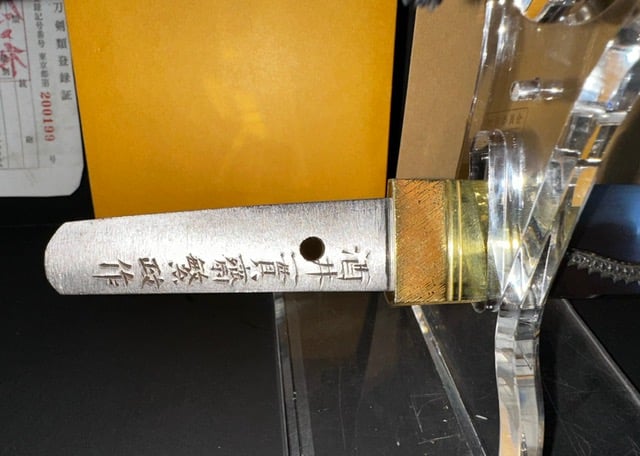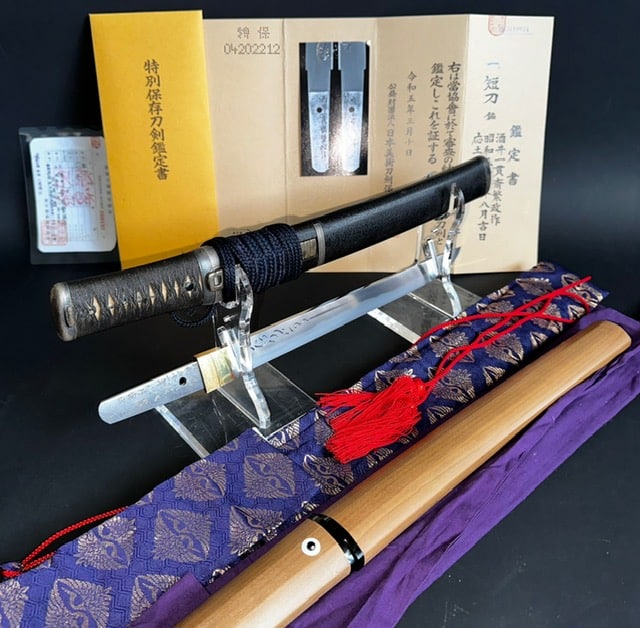Description
This Tanto blade was signed by Sakai Ikkansai Shigemasa (酒井一貫斎繁政) in the 51st year of the Showa era (1976).
Shigemasa (his birth was Sakai Kan) was born in the 38th year of the Meiji era (1905) as the third son of Sakai Anjiro in the city of Shizuoka, Japan.
And he became an apprentice of Kasama Shigetsugu (笠間繁継), a renowned swordsmith in the 10th year of the Taisho era (1921), when he was still a teenager.
After 15 years of continuous training, he finally received one of his master’s letters, “繁”, and began signing as Shigemasa (繁正).
He became an independent swordsmith in the 8th year of the Showa era (1933).
Since then, he became Rikugun Jyumei Tosho (陸軍受命刀匠), the title given by the Japanese military to skilled Japanese swordsmiths during Taisho—the early Showa period. To obtain this title, a swordsmith forged two swords and submitted them to the government agency that produced weapons.
After passing the special and rigorous exam there, the swordsmith would be recognized as Rikugun Jyumei Tosho. We assumed that he mainly forged swords for the Japanese army before and during World War II.
After World War II, he changed his name to Ikkansai Shigemasa (一貫斎繁政) and continued forging for the rest of his life. He was selected as *Mukansa swordsmith by NBTHK (Nihon Bijutsu Touken Hozon Kyokai). Based on the signature on the tang, this Tanto blade was forged when he was 71 years old (1976).
He died at the age of 91 in 1996. Although he was known for his highly skilled forging technique, he was also excellent at engraving his work.
The engraving of this blade was also done by Shigemasa.
The design is dragon and Sanskrit letters. What is a Mukansa Swordsmith? It is one of the most honorable titles a modern swordsmith can receive.
Someone with this title could submit their work to the NBTHK (Nihon Bijyutu Touken Hozon Kyokai) Japanese Sword Exhibition without being examined.
Other sword makers, on the other hand, must pass a strict test to participate in this event.
This fact also suggests that he was a great swordsmith in modern times.
There are now only 39 Mukansa swordsmiths since the exhibition began in 1955.
This exhibition is held once a year by NBTHK and modern swordsmiths compete there for their craftsmanship.























